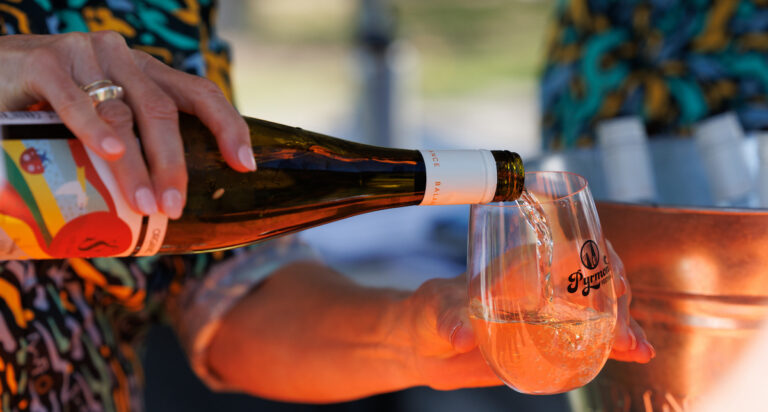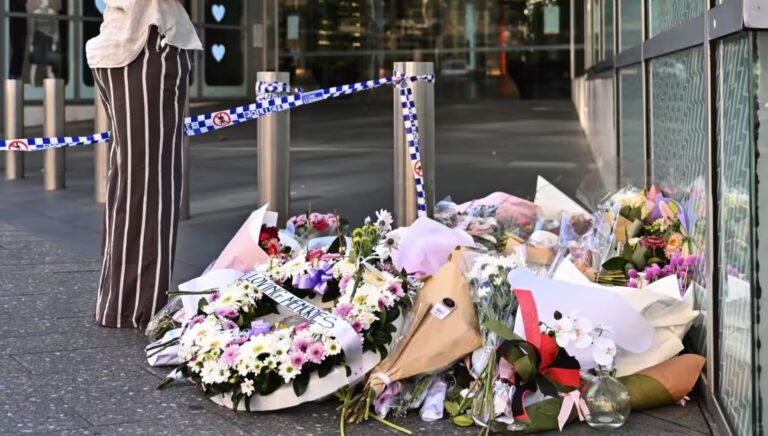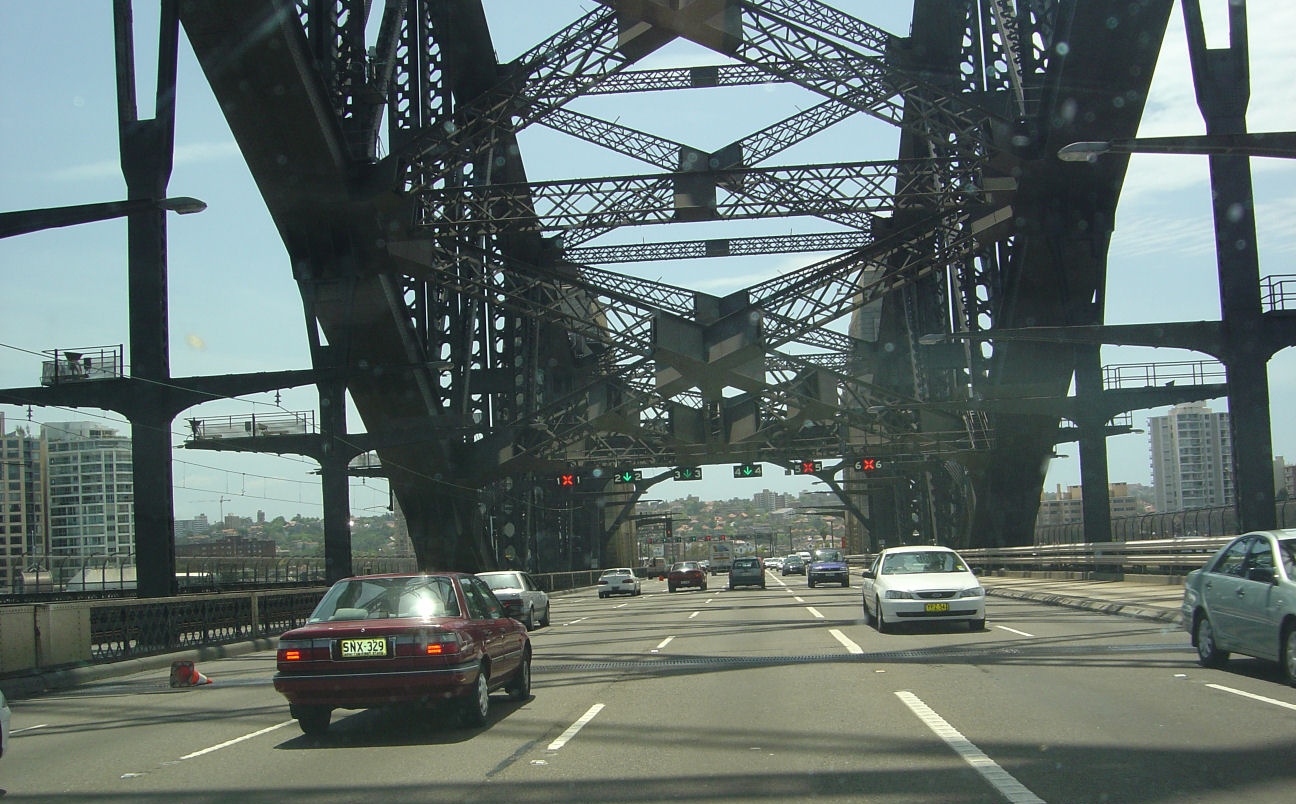
Swinging sisters: a tale of two bridges
BY ALEC SMART
Calls to repair Glebe Island Bridge and reactivate the 1899-built electric swing bridge over Rozelle Bay will likely go unheeded for the foreseeable future. Bicycle NSW are among those lobbying for the heritage-listed bridge to be put back into permanent service as a combined cycle path and light rail route from Pyrmont to the Balmain peninsula.
Bicycle NSW suggest that while the different stages of the WestConnex tollroad construction works at Rozelle Interchange continue until 2023, reopening Glebe Island Bridge would make an ideal long-term cycle and pedestrian route between the city and inner-west. Instead, planned diversions scheduled for the existing cycle/foot paths from Rozelle Bay into Annandale, Lilyfield and Rozelle will see the creation of several temporary routes, causing disruption to cyclists and pedestrians attempting to commute through the area.
Tied to the masts
The 120-year-old bridge remains in a permanently open position, allowing an estimated 200 boats a day, including fishing vessels and small ferries, to move back and forth between Rozelle and Blackwattle bays and Sydney Harbour, a number of which are high-masted.
However, Bastien Wallace, Bicycle NSW General Manager of Public Affairs, believes one of the primary impediments to reactivating the bridge – which entails closing the pivoting middle section – centres on the passage of those high-masted yachts. If their pilots have to wait for the bridge to open to allow passage, they are likely to lodge strong objections to the bridge’s redeployment, especially if those openings are scheduled.
Wallace told City Hub, “Apparently the issue is that high-net-worth individuals have demanded the bridge be left open so they can sail their super-yachts in and out anytime they feel like. [Yet] I can’t see why this couldn’t work more like the Spit Bridge [between Mosman and Clontarf in Middle Harbour] with a couple of designated opening times per day.”
The bridge pivot was last closed for a cycle event on 23 Oct 2005, the Sydney Spring Cycle, a 51km ride from North Sydney to Olympic Park that included Glebe Island Bridge among several harbour crossings.
Glebe Island Bridge’s future is being considered as part of the Bays Precinct Urban Transformation Program. The plan, released in October 2015 by then-Premier of NSW, Mike Baird, was developed by UrbanGrowth NSW to establish a strategy for how the Bays Precinct could be developed to support the growth of Sydney as an internationally competitive city.
A Transport for NSW (TfNSW) spokesperson told City Hub: “TfNSW is still investigating options for re-use of the Glebe Island Bridge to facilitate connectivity between the proposed Bays Precinct and the City of Sydney.
Active transport links are important parts of our transport network, and include the new Rozelle Interchange which is under construction and will improve connectivity in the Bays Precinct…”
In June 2019 the NSW Govt was accused of deliberately ‘neglecting’ Glebe Island Bridge by Philip Thalis, an architect and City of Sydney councillor.
Thalis said: “The government has pursued a policy of demolition by neglect. They seem to have no interest in keeping it.”
A TfNSW spokesperson told Sydney Morning Herald they wouldn’t rule out the possibility of demolition. “While no decisions have been made, any future use of the Glebe Island Bridge would involve an assessment of the current structure’s condition and suitability.”
City of Sydney told City Hub: “The Glebe Island Bridge is owned by Maritime NSW, who would be best to contact about its feasibility as an alternate route for people walking and riding. We’re not aware of its condition but it does appear to be in a state of disrepair.”
—————————————–
A tale of two bridges
Glebe Island Bridge and its sister, Pyrmont Bridge, are among the last remaining electrically-operated swing bridges in the world and the last two in Australia. Construction of both bridges was begun in conjunction in 1899 under the supervision of esteemed civil engineer Percy Allan.
The pair both featured a pivoting midsection powered by electricity that could rotate open through 90 degrees in under a minute to facilitate maritime traffic. They were, upon completion, among the world’s first electrically-operated opening bridges and considered engineering marvels (Pyrmont Bridge opened in 1902, Glebe Island Bridge a year later) and compared with the acclaimed Tower Bridge in London, a hydraulic suspension bridge opened in 1894.
Traffic was managed by lights and a pair of timber swing-gates on either end of the approach ramps, which interlocked electronically to ensure that the pivoting centre section couldn’t open until the gates were closed and vehicles halted.
Pyrmont Bridge was closed to vehicular traffic on 7 Aug 1981 as cars, trucks and buses were diverted to flyovers that coursed around the southern edge of Darling Harbour. Since then it has carried pedestrian and bicycle traffic, although for 25 years until June 2013 a single monorail track ran along its length.
Pyrmont Bridge, with a swing bridge that remains functional and opens to a schedule maintained by the Sydney Harbour Foreshore Authority, was added to the NSW State Heritage Register in June 2002.
Unfortunately, its poor sister in Rozelle Bay fared considerably worse.
Glebe Island Bridge, reportedly in good condition when it was decommissioned on 3 Dec 1995 as the parallel Anzac Bridge opened alongside, deteriorated so rapidly thereafter with limited maintenance that it was considered for destruction within a decade of its closure.
A 2009 structural assessment found the bridge in “very poor condition” and Sydney City Council were among several councils and community organisations requesting the NSW Govt urgently spend money on its repair and upkeep. In Jan 2012, a wooden platform under the bridge’s western span collapsed.
In March 2013 the NSW State Govt-appointed Bays Precinct Taskforce released a report that found the bridge, including its approach ramps, was rapidly rotting.
A Sept 2013 report, Options for Glebe Island, by Acil Allen Consulting and commissioned by TfNSW, reported on the feasibility of reusing or demolishing the historic structure. The cost analysis said it would require around $38 million to renovate the bridge to working condition (as a two-lane traffic bridge), and about the same to demolish it.
Rescue without repair
However, on 29 Nov 2013 Glebe Island Bridge was thrown a lifeline and narrowly avoided demolition when it was added to the NSW State Heritage Register, 11 years after its sister, Pyrmont Bridge.
In 2015, it was further suggested the bridge could be utilised to extend the Sydney Light Rail network as part of the White Bay redevelopment that had begun two years earlier. White Bay was repurposed as a cruise ship terminal in 2013 after three decades as a container port.
A light rail spur would have enabled international tourists to better commute from the terminal in Balmain to tourist attractions around the city instead of waiting for buses. The NSW Govt is now costing the construction of a mega-cruise ship terminal at Yarra Bay in Botany Bay, which may in time be serviced by extending the newly-opened CBD and South East Light Rail. Trams to White Bay and the Balmain peninsula from Pyrmont via Glebe Island Bridge have been postponed indefinitely.
An exhibition centre was also considered for Glebe Island, however, that was kyboshed by the Port Authority of NSW, which, in a controversial approval of its own plan, announced on 28 Oct 2019 its intention to convert the former island into a full-time facility for the delivery, storage and distribution of construction materials. The materials are destined for the NSW Govt’s multiple infrastructure projects, including WestConnex Rozelle Interchange and the proposed Western Harbour Tunnel.
This move has infuriated many of the 22,500 residents of neighbouring Pyrmont, Australia’s most densely-populated suburb, who now expect to contend with a future of continuous industrial noise and an atmosphere of swirling dust and concrete powder.
————————-
Bicycle NSW suggested cycle route:
https://bicyclensw.org.au/a-better-bike-detour-for-rozelle/
Further reading:
http://cityhubsydney.com.au/?s=Glebe+Island+Bridge









